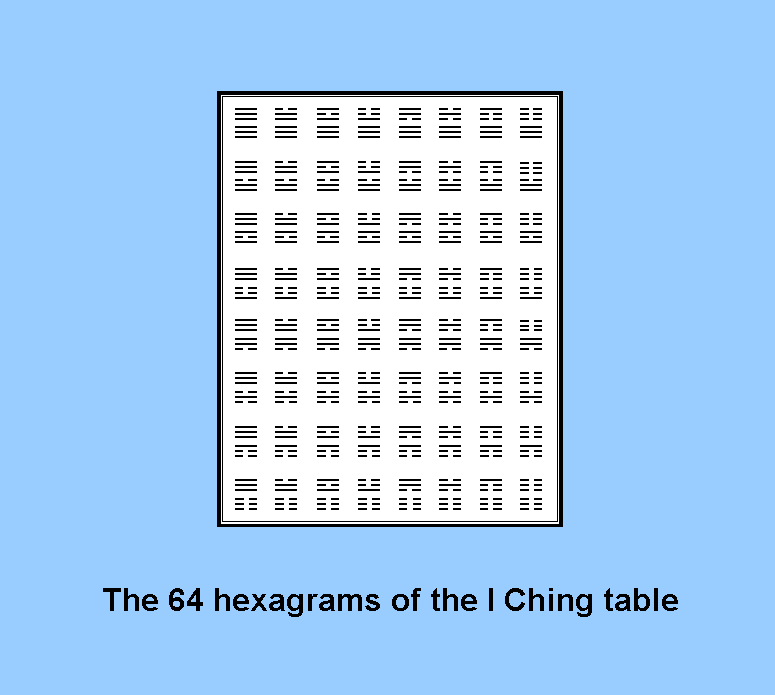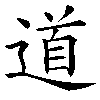
| << Previous [1] 2 Next >> |

Suppose that one tosses a coin three times. The result of tossing each time is either "heads" or "tails". Two tosses leads to either heads-head, heads-tails, tails-head or tail-tail, that is, (2×2=4) possible outcomes. Three tosses leads to (2×2×2=8) outcomes. Now suppose that the coin is tosses another three times. Again, there are eight different combinations of head and tails. Each outcome from the first three throws may be followed by any one of the eight results of the second set of throws. This means that there are (8×8=64) possible pairs of outcomes of throwing three coins and then repeating them. Eight of these are when the outcome of the second set of throws is identical to that of the first not only in numbers of heads and tails but also in the order in which the faces of the coins turn up. The number of different pairing of eight objects without regard for their ordering is 28. The 64 pairs of outcomes consist therefore of eight pairs when the eight possible results of tossing the three coins merely repeat themselves, 28 pairs when the outcome for the second set of throws changes and 28 pairs when the outcome of the second set of throws is the reverse of these, e.g., instead of (say) head-tail-head being followed by tail-tail-head, the outcome is tail-tail-head followed by head-tail-head.
This, essentially, is how the ancient Chinese system of divination known as I Ching is used to answer questions. Originally, yarrow stalks were used to generate a set of six results indicating the answer to a question, but this method is a biased random generator, so that the possible outcomes are not equally probable. The yarrow stalk method was gradually replaced during the Han Dynasty by the three coins method. Many methods have evolved over the years to generate the results of the six tosses, which are called "hexagrams." Some people prefer using dice to coins because they avoid the problems of whether the coin is tumbling when cupped in the hand and of it bouncing and scattering when flipped. In this case, if an odd number of pips appears in the die, it counts as "heads;" if an even number of pips appears, it counts as "tails." Outcomes of a randomly generated event like tossing a coin or die are represented by either unbroken lines (—) representing the Yang aspect of the event or broken lines (− −) representing the Yin aspect. Either type of line is characterized as either stable ("young") or changing ("old"), so that there are four possibilities for each line. The set of three tosses of the coin generates three lines called a "trigram." The eight possible outcomes of throwing three coins are represented by eight trigrams. The hexagram is a pair of trigrams representing the outcome of the two sets of three throws. Once the hexagram has been generated, one consults the oracle in the form of commentaries in the I Ching ("Book of Changes") for each of the 64 hexagrams in order to determine the answer to one's question.
For the purpose of this website, no attempt needs to be made to answer the issue of whether I Ching "works" and (if so) how or why it does. That is irrelevant in the present context. What is important here is 1. the mathematical nature and meaning(s) of the 8×8 matrix of hexagrams that grew out of Taoism, and 2. their connection to the sacred geometries of other religions. This array is an abstract representation of the Tao. Literally translated as the "path" or "way," although more accurately as the "right way," this ancient word has no single meaning and is interpreted in many different ways even within Taoist sects. The Tao Te Ching is the ancient Chinese classic text written according to tradition by the Chinese sage Lao Tzu in about the 6th century BCE. But even then, the word "Tao" had no well-defined, single meaning. Indeed, the opening of the Tao Te Ching illustrates its indefinable aspect: "The Tao that can be spoken of is not the real Tao." The Tao is the driving principle behind the natural order, yet it not Nature. It signifies "the way things are," yet it is not a force or object existing in the world of duality. It is the causeless Cause, the ultimate source of all phenomena. In symbolically representing something as mundane as all possible outcomes of two sets of three tosses of a coin, the table of hexagrams is expressing something far more profound and fundamental about the mathematical nature of the Tao. At the most elementary level of space-time — the subatomic world of the superstring — we shall discover in the section Superstrings as sacred geometry how this nature manifests.
 The stroke order for the Chinese character for "Tao".
The stroke order for the Chinese character for "Tao".
For an online introduction to I Ching by Richard Wilhelm, one of its greatest exponents, see here.
| << Previous [1] 2 Next >> |